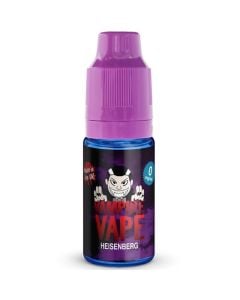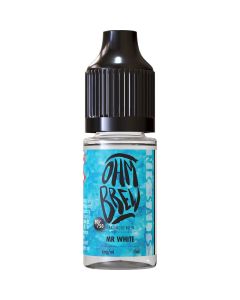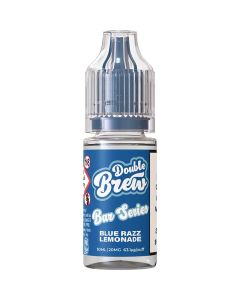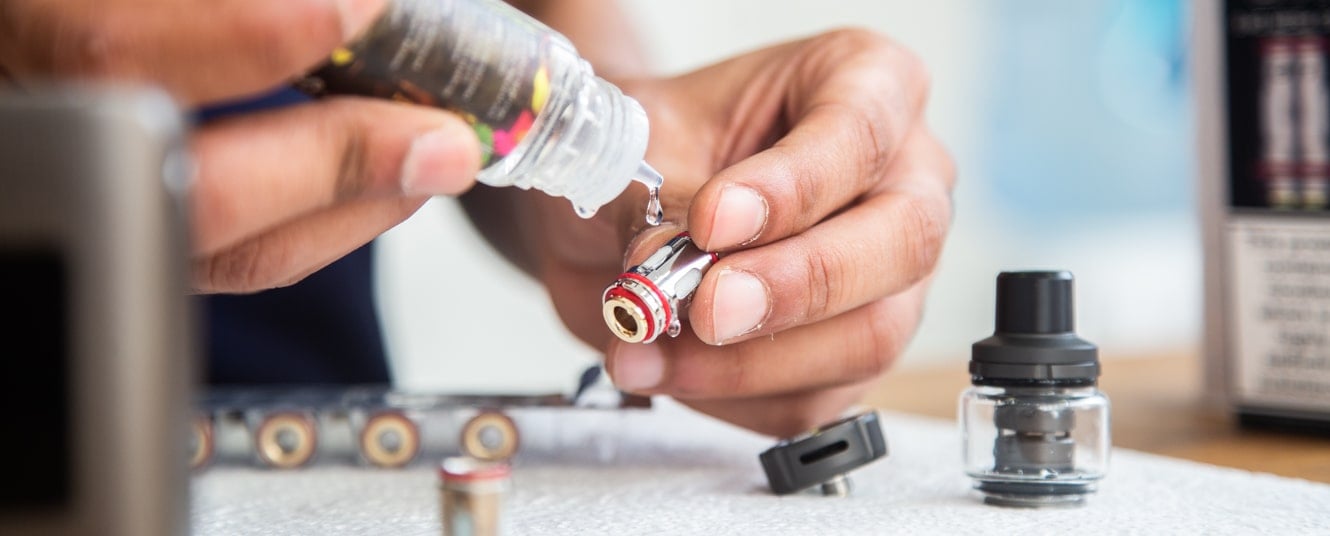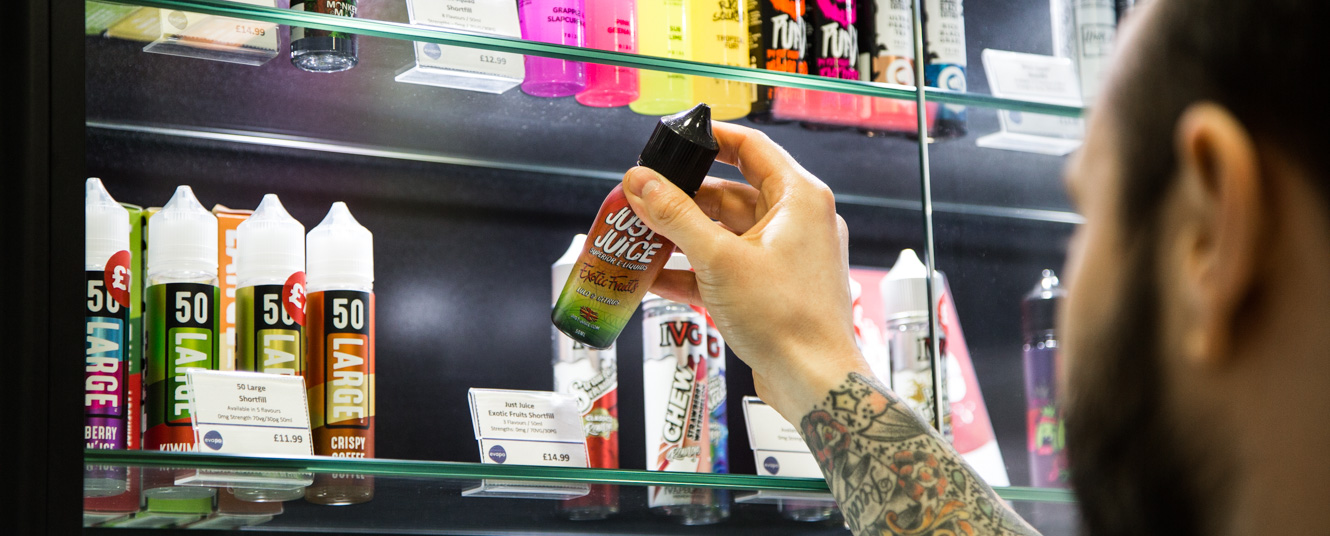When it comes to the nicotine in e-liquid, there are two main types to think about – nicotine salts and freebase nicotine. Each has their own unique set of properties and offers a distinct vaping experience.
When you’re trying to decide which kind of e-liquid to buy, understanding what nic salts and freebase nicotine are could help you find the one that suits you best. Check out our handy guide and get to know the difference.
What is freebase nicotine?
Freebase nicotine used to be found in the majority of e-liquids, until the rise in popularity of nic salts. It contains a type of naturally occurring nicotine that’s extracted from a tobacco leaf using an alkaline based method. The extracted nicotine is then formulated in a lab and used to create freebase nicotine.
Freebase nicotine can become quite harsh on the throat at high nicotine strengths, so will not necessarily feel comfortable for all vapers.
What are nicotine salts?
Nic salt e-liquids are made using a different form of nicotine to the freebase type commonly used to make other traditional e-liquids, known as nicotine salts. Nicotine salts are extracted from the tobacco leaf using an organic compound base and, because they take the same form in which nicotine naturally occurs within the leaf, they can be thought of as a more authentic form of nicotine.
The organic compound base used to extract nicotine salts occurs naturally in many plants, and is commonly found in a number of medicines and as a preservative in acidic foods and drinks like citrus fruit juice, pickled vegetables, and carbonated drinks.
Nicotine salts are absorbed into the blood more quickly than freebase nicotine, offering a faster hit. They’re also known for producing a smoother throat feel than e-liquids using freebase nicotine. Find out more about them in our guide to nic salts.
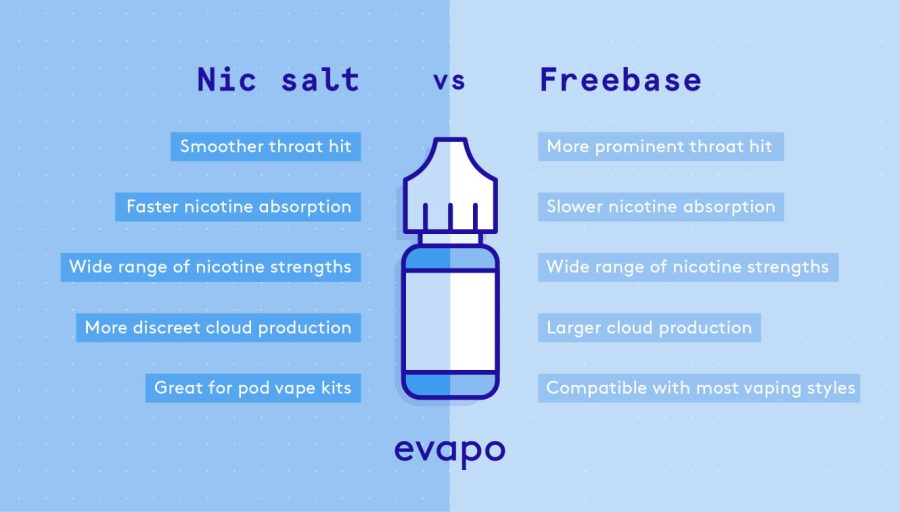
Key differences between nic salts and freebase nicotine
Weigh up the differences between nic salts and freebase nicotine with our handy at-a-glance guide.
| Feature | Nicotine Salts | Freebase Nicotine |
| Throat hit | Smoother with minimal throat hit, even at higher nicotine strengths. | Harsher with a stronger throat hit, especially at high nicotine levels. |
| Absorption rate | Absorbed into the bloodstream quickly, providing a faster nicotine hit. | Slower absorption, leading to a more gradual nicotine hit. |
| Nicotine strengths available | Typically found in higher strengths (e.g., 10mg, 20mg in the UK, 50mg in some other countries). | Available in a wide range of strengths (e.g., 3mg, 6mg, 12mg, 18mg). |
| Device compatibility | Best suited for low-wattage, mouth-to-lung (MTL) pod systems and starter kits. | Best suited for mouth-to-lung (MTL) devices like starter kits/pod systems. |
| Flavour profile | Slightly muted flavours in comparison to freebase nicotine. | Stronger and more pronounced flavours. |
| Usage recommendation | Ideal for smokers transitioning to vaping or those seeking higher nicotine intake with a smooth throat hit. | Suitable for vapers who prefer lower nicotine levels and/or stronger throat hits. |
| Cost efficiency | Typically lasts longer since users require fewer puffs due to faster nicotine absorption. | May require more frequent vaping to achieve the same level of nicotine satisfaction. |
| Chemical composition | Nicotine combined with an organic compound base to create a more stable form. | Pure nicotine in its freebase form, which has a higher pH. |
Nic salts or freebase: which should you choose?
When you’re trying to choose between nic salt or freebase e-liquids, the important thing is to think about the kind of vaping experience you prefer.
For a start, if you’re switching to vaping from cigarettes while you try to quit, the higher levels of nicotine nic salts can offer without a harsh throat hit might be the best way to manage cravings. It’s also worth bearing in mind that nic salts are absorbed more quickly so you feel the effect of the nicotine faster.
That said, there are some vapers who enjoy a stronger throat hit and who enjoy longer vaping sessions. For those vapers, e-liquids with freebase nicotine make sense, as they offer that distinctive feeling in the throat as well as a slower release of nicotine that’s suited to longer sessions. Options like Vampire Vape and Ohm Brew Core are great choices for this experience.
What’s more, if it’s a wider range of flavours you’re looking for, then nic salt e-liquids are the perfect choice. When it comes to freebase e-liquids, you’ll find a great selection of popular flavours, however, nic salts offer a much wider range.
For those who’re after a more intense flavour, then bar salts could be the answer. Bar salts are a subset of nic salts, which are designed to mimic disposable vape flavours. Learn more about the key differences in our guide to bar salts vs nic salts.
Nicotine salt and freebase nicotine shots for shortfills
When you’re thinking whether to choose nic salt or freebase e-liquids, it’s also worth considering nicotine shots – especially if you’re a fan of sub-ohm and advanced vape kits. These are 10ml bottles of unflavoured e-liquid with an 18 mg/ml nicotine strength that are designed to be added to shortfill e-liquid bottles which come without nicotine.
Shortfills will often (but not always) have a high VG formula, which is best suited to sub-ohm and advanced vape kits, and for DTL vaping. There are both nic salt and freebase nic shots available, so you can choose between the different characteristics of the two different nicotine types, but in a formula that suits your favourite vape kit.
The standard nic shot and cool nic shot (an option that offers a cool sensation to give shortfills an additional icy finish) from Ohm Brew are both freebase, while the nic salt nic shots are made using nicotine salts.
Experimenting with freebase and nic salt e-liquids can help you create your own ideal vaping experience. Whether you’re looking for a strong throat hit, an intense flavour, a certain speed of nicotine absorption, or an e-liquid that suits your vape kit, you’ll find plenty of varieties to try here at Evapo. Pop into your local store or get started by browsing our wide range of nic salts.



